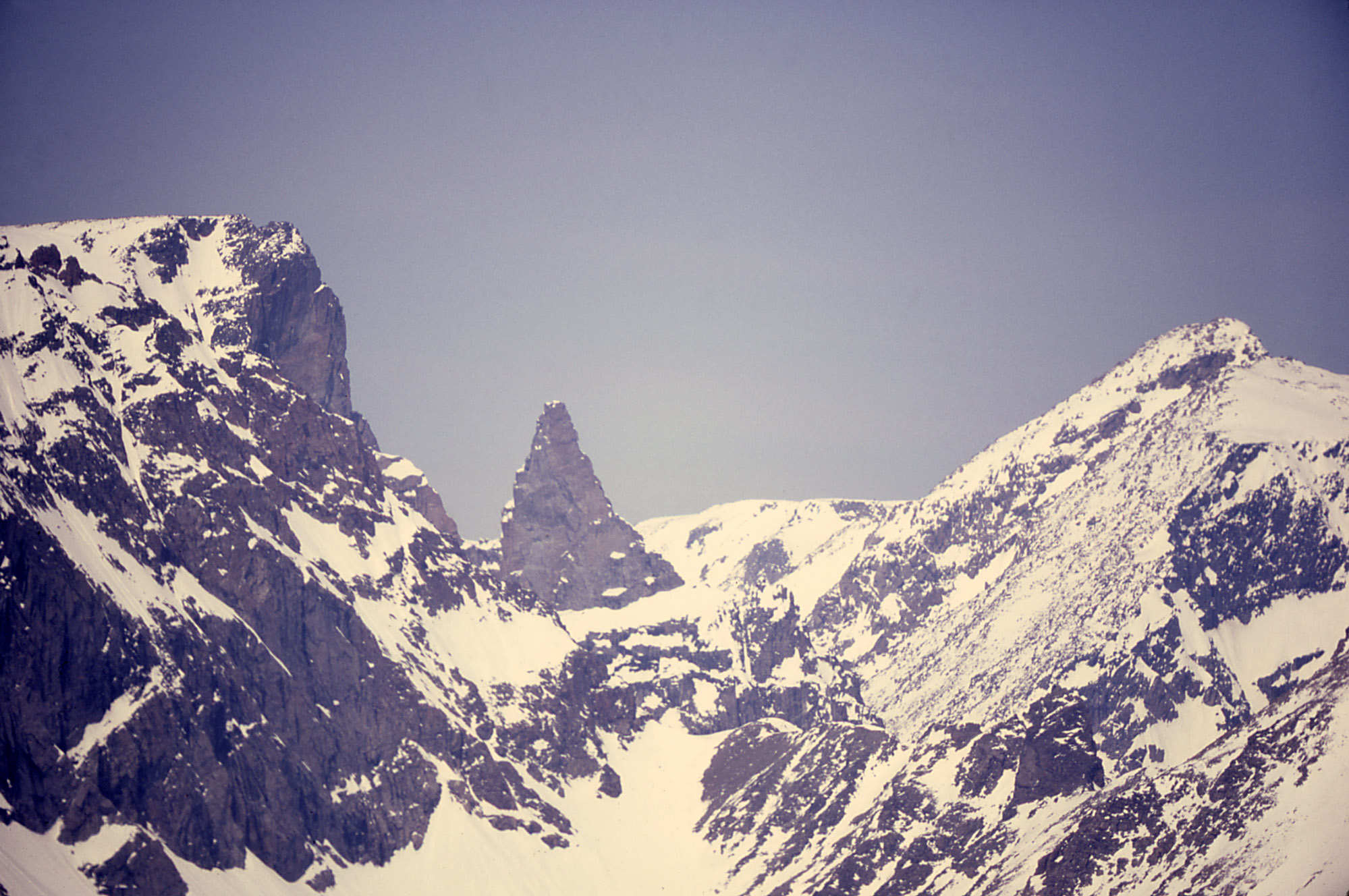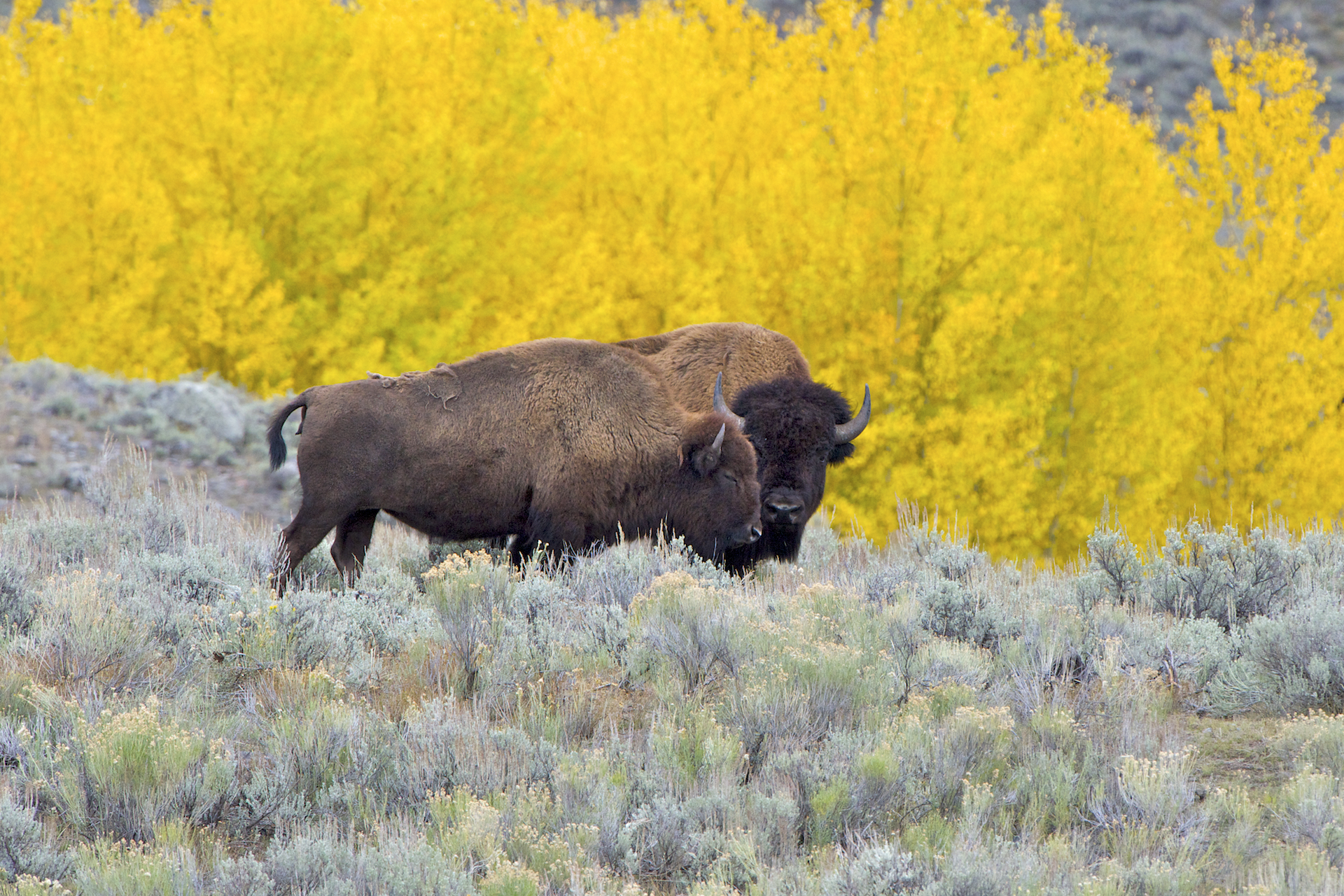|
Dryhead Country
Dryhead Country is a region in Carbon County and Big Horn County in southern Montana between Bighorn Canyon and the Pryor Mountains. The locale was named after the piles of dry bison skulls that accumulated at the base of a local buffalo jump. The Dryhead region starts near the Wyoming border in Bighorn Canyon National Recreation Area and extends northward into the Crow Indian Reservation. Dryhead Creek drains a portion of the area, falling eastwards into Bighorn Canyon. The semi-arid basin is one of the most remote areas in Montana. The area is sparsely populated with isolated ranches. Limited settlement took place in the late 19th century in the form of small homesteads that took advantage of the open range to become ranching operations. Several of these ranches have been preserved within Bighorn Canyon National Recreation Area. The Ewing-Snell Ranch The Ewing-Snell Ranch was established between 1896 and 1898 by Erastus Ewing in Carbon County, Montana, on Layout Creek betwe ... [...More Info...] [...Related Items...] OR: [Wikipedia] [Google] [Baidu] |
Carbon County, Montana
Carbon County is a county located in the U.S. state of Montana. As of the 2020 census, the population was 10,473. Its county seat is Red Lodge. Carbon County is part of the Billings, MT Metropolitan Statistical Area. History Carbon County was named for the rich coal deposits found in the area. It was organized on March 4, 1895, from portions of Park and Yellowstone counties. Land from Park and Yellowstone counties was used to form Carbon County on March 4, 1895. More than sixty federally designated historic sites are located in the county, including Petroglyph Canyon, one of the state's most important rock art sites. The first commercial oil well in the state was established in Elk Basin fields in 1915. Geography According to the United States Census Bureau, the county has a total area of , of which is land and (0.6%) is water. Granite Peak, the state's highest mountain, is found in Carbon County's Beartooth Mountains. The Beartooth Highway, one of the "most specta ... [...More Info...] [...Related Items...] OR: [Wikipedia] [Google] [Baidu] |
Big Horn County, Montana
Big Horn County is a county located in the U.S. state of Montana. As of the 2020 census, the population was 13,124. The county seat is Hardin. The county, like the river and the mountain range, is named after the bighorn sheep in the Rocky Mountains. The county was founded in 1913. It is located on the south line of the state. Most of the area is part of the Crow Indian Reservation. Reservation poverty affects the county, which is the second-poorest county in the state. History Law and government The county has several jurisdictions, each with its own regulations and law enforcement agencies. The Crow and Northern Cheyenne Indian Nations are administered by the tribes. Little Bighorn Battlefield and the Big Horn Canyon National Recreation Area are regulated by the National Park Service. The remainder of the county falls under the State of Montana. Geography According to the United States Census Bureau, the county has a total area of , of which is land and (0.4%) is wat ... [...More Info...] [...Related Items...] OR: [Wikipedia] [Google] [Baidu] |
Montana
Montana () is a state in the Mountain West division of the Western United States. It is bordered by Idaho to the west, North Dakota and South Dakota to the east, Wyoming to the south, and the Canadian provinces of Alberta, British Columbia, and Saskatchewan to the north. It is the fourth-largest state by area, the eighth-least populous state, and the third-least densely populated state. Its state capital is Helena. The western half of Montana contains numerous mountain ranges, while the eastern half is characterized by western prairie terrain and badlands, with smaller mountain ranges found throughout the state. Montana has no official nickname but several unofficial ones, most notably "Big Sky Country", "The Treasure State", "Land of the Shining Mountains", and " The Last Best Place". The economy is primarily based on agriculture, including ranching and cereal grain farming. Other significant economic resources include oil, gas, coal, mining, and lumber. The health ca ... [...More Info...] [...Related Items...] OR: [Wikipedia] [Google] [Baidu] |
Bighorn Canyon
Bighorn Canyon National Recreation Area is a national recreation area established by an act of Congress on October 15, 1966, following the construction of the Yellowtail Dam by the Bureau of Reclamation. It straddles the border between Wyoming and Montana. The dam, named after the famous Crow leader Robert Yellowtail, harnesses the waters of the Bighorn River by turning that variable watercourse into Bighorn Lake. The lake extends through Wyoming and Montana, of which lie within the national recreation area. About one third of the park unit is located on the Crow Indian Reservation. Nearly one-quarter of the Pryor Mountains Wild Horse Range lies within the Bighorn Canyon National Recreation Area."Wild Horses." Billi ... [...More Info...] [...Related Items...] OR: [Wikipedia] [Google] [Baidu] |
Pryor Mountains
The Pryor Mountains are a mountain range in Carbon and Big Horn counties of Montana, and Big Horn County, Wyoming. They are located on the Crow Indian Reservation and the Custer National Forest, and portions of them are on private land. They lie south of Billings, Montana, and north of Lovell, Wyoming. The mountains are named for Sergeant Nathaniel Hale Pryor, a member of the Lewis and Clark Expedition who vainly pursued horses stolen from the expedition in the area. The Crow Nation, a Native American tribe which lived nearby, called the mountains Baahpuuo Isawaxaawuua ("Hitting Rock Mountains") because of the abundance of flint there (which was chipped into arrowheads). According to Crow Nation folklore, Little People (a race of high dwarf-like people with spiritual powers) lived in these mountains. Geology The Pryor Mountains are a region of Montana and Wyoming.Cruise and Griffiths, p. 185. The Pryor Mountains consists of Paleozoic, Mesozoic and Cenozoic s ... [...More Info...] [...Related Items...] OR: [Wikipedia] [Google] [Baidu] |
American Bison
The American bison (''Bison bison'') is a species of bison native to North America. Sometimes colloquially referred to as American buffalo or simply buffalo (a different clade of bovine), it is one of two extant species of bison, alongside the European bison. Its historical range, by 9000 BC, is described as the great bison belt, a tract of rich grassland that ran from Alaska to the Gulf of Mexico, east to the Atlantic Seaboard (nearly to the Atlantic tidewater in some areas) as far north as New York, south to Georgia and, according to some sources, further south to Florida, with sightings in North Carolina near Buffalo Ford on the Catawba River as late as 1750. Once roaming in vast herds, the species nearly became extinct by a combination of commercial hunting and slaughter in the 19th century and introduction of bovine diseases from domestic cattle. With a population in excess of 60 million in the late 18th century, the species was culled down to just 541 animals by 1889. ... [...More Info...] [...Related Items...] OR: [Wikipedia] [Google] [Baidu] |
Buffalo Jump
A buffalo jump, or sometimes bison jump, is a cliff formation which Indigenous peoples of North America historically used to hunt and kill plains bison in mass quantities. The broader term game jump refers to a man-made jump or cliff used for hunting other game, such as reindeer. Method of the hunt Hunters herded the bison and drove them over the cliff, breaking their legs and rendering them immobile. Tribe members waiting below closed in with spears and bows to finish the kills. The Blackfoot people called the buffalo jumps "pishkun", which loosely translates as "deep blood kettle". This type of hunting was a communal event that occurred as early as 12,000 years ago. They believed that if any buffalo escaped these killings then the rest of the buffalo would learn to avoid humans, which would make hunting even harder. Buffalo jump sites are often identified by rock cairns, which were markers designating "drive lanes", by which bison would be funneled over the cliff. These d ... [...More Info...] [...Related Items...] OR: [Wikipedia] [Google] [Baidu] |
Bighorn Canyon National Recreation Area
Bighorn Canyon National Recreation Area is a national recreation area established by an act of Congress on October 15, 1966, following the construction of the Yellowtail Dam by the Bureau of Reclamation. It straddles the border between Wyoming and Montana. The dam, named after the famous Crow leader Robert Yellowtail, harnesses the waters of the Bighorn River by turning that variable watercourse into Bighorn Lake. The lake extends through Wyoming and Montana, of which lie within the national recreation area. About one third of the park unit is located on the Crow Indian Reservation. Nearly one-quarter of the Pryor Mountains Wild Horse Range lies within the Bighorn Canyon National Recreation Area."Wild Horses." Bil ... [...More Info...] [...Related Items...] OR: [Wikipedia] [Google] [Baidu] |
Crow Indian Reservation
The Crow Indian Reservation is the homeland of the Crow Tribe. Established 1868, the reservation is located in parts of Big Horn County, Montana, Big Horn, Yellowstone County, Montana, Yellowstone, and Treasure County, Montana, Treasure counties in southern Montana in the United States. The Crow Tribe has an enrolled membership of approximately 11,000, of whom 7,900 reside in the reservation. 20% speak Crow language, Crow as their first language. The reservation, the largest of the seven Indian reservations in Montana, is located in south-central Montana, bordered by Wyoming to the south and the Northern Cheyenne Indian Reservation to the east. The reservation includes the northern end of the Bighorn Mountains, Wolf Mountains, and Pryor Mountains. The Bighorn River flows north from the Montana-Wyoming state line, joining the Little Bighorn River, Little Bighorn just east of Hardin, Montana, Hardin. Part of the reservation boundary runs along the ridgeline separating Pryor Creek ... [...More Info...] [...Related Items...] OR: [Wikipedia] [Google] [Baidu] |
Ewing-Snell Ranch
The Ewing-Snell Ranch was established between 1896 and 1898 by Erastus Ewing in Carbon County, Montana, on Layout Creek between Bighorn Canyon and the Pryor Mountains in a region called Dryhead Country. Ewing took up ranching after failing as a gold miner. Erastus Ewing was born in Tennessee about 1846, arriving in Montana in the 1880s to look for gold. He staked numerous claims, one of which controlled the water rights for Layout Creek. After giving up prospecting, he used the rights to establish his ranch, digging a ditch to his homestead from the creek. Ewing's place was designated a post office in 1898, operating until 1906 as Ewing, Montana before moving to the Caroline Lockhart Ranch. Erastus died in 1904. His son Lee sold the ranch to Clint Hough in 1911, who sold it to Philip Snell in 1918. The shop building operated as the Dryhead School in 1945–57. Snell's descendants sold the ranch to Newell K. Sorenson in 1964. Sorenson sold to the Bureau of Reclamation for th ... [...More Info...] [...Related Items...] OR: [Wikipedia] [Google] [Baidu] |
Geography Of Carbon County, Montana
Geography (from Greek: , ''geographia''. Combination of Greek words ‘Geo’ (The Earth) and ‘Graphien’ (to describe), literally "earth description") is a field of science devoted to the study of the lands, features, inhabitants, and phenomena of Earth. The first recorded use of the word γεωγραφία was as a title of a book by Greek scholar Eratosthenes (276–194 BC). Geography is an all-encompassing discipline that seeks an understanding of Earth and its human and natural complexities—not merely where objects are, but also how they have changed and come to be. While geography is specific to Earth, many concepts can be applied more broadly to other celestial bodies in the field of planetary science. One such concept, the first law of geography, proposed by Waldo Tobler, is "everything is related to everything else, but near things are more related than distant things." Geography has been called "the world discipline" and "the bridge between the human and th ... [...More Info...] [...Related Items...] OR: [Wikipedia] [Google] [Baidu] |






